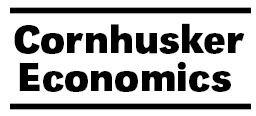Agricultural Economics Department
Date of this Version
5-2011
Document Type
Article
Citation
Cornhusker Economics (May 2011)
Abstract
Today’s farmers and ranchers face an unprecedented risk environment. Extreme price volatility has impacted the cost of inputs for producers, as well as the prices they receive for farm commodities. Livestock producers face fluctuations forcing them to re-evaluate their business and marketing plans. Some face liquidation, due to declining profits stemming from high feed prices and reduced consumer demand. With a $1 per bushel swing possible in corn prices, feeder cattle prices could continue to be very volatile in the months to come (Feuz, 2011). At this point in the planting season there is still the potential to be short of corn, which means there could once again be a very tight corn supply to meet ethanol mandates, feeding needs and export demand. Input prices for producers also continue to fluctuate, including fuel and fertilizer. According to the Federal Reserve Bank of Kansas City, (first quarter 2011), farmers are seeing farm income and farmland values increase in 2011. Shrinking crop inventories and intense competition for planted acreage lifted crop prices, while stronger protein demand boosted livestock prices. These changes show the need for risk management education has never been more important.


Comments
Published by University of Nebraska–Lincoln Extension, Institute of Agriculture & Natural Resources, Department of Agricultural Economics. Copyright © [2011] Board of Regents, University of Nebraska. http://agecon.unl.edu/cornhuskereconomics